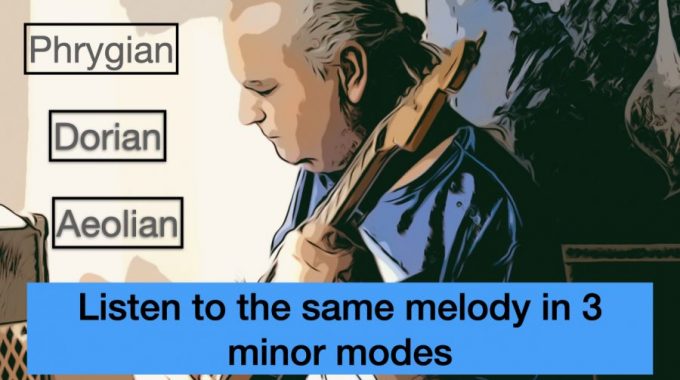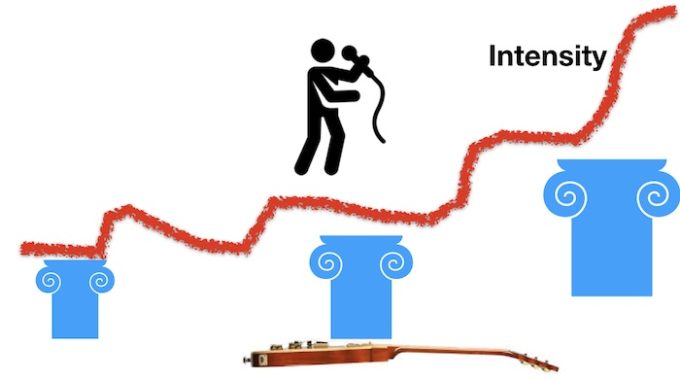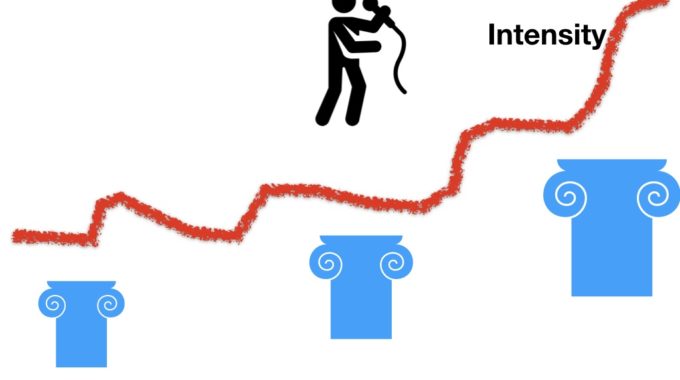Listen to this same melody played in three different modes: Aeolian Minor, Phrygian Minor, Dorian Minor. Learn how to compose.

Guitar Songwriting lessons
Online Guitar Songwriting Courses
The Guitar songwriting courses are part of the songwriting module of guitar lessons at the Creative Guitar School. Please follow this link to view the next available group synchronous online guitar songwriting learning course: The Pivoting Techniques
Module 1: The Birth of the Song
For all songwriters and performers who wish to explore through advanced harmony, the ultimate feel for a song.
Advanced harmony can be made simple if it is explained without complicated terminology. These guitar songwriting lessons and courses, will give you an in depth harmonic melodic knowledge of the guitar, that will transform how you perform, compose, arrange and produce your performance of your desired song.
 The outcome of all modules ( Making advanced harmonic textures accessible to all guitarists and songwriters)
The outcome of all modules ( Making advanced harmonic textures accessible to all guitarists and songwriters)
This guitar songwriting course is divided into three modules:
- Module 1: The Birth of the Song. In this module you will learn tools/strategies to make sure your song has the most unique: chords, melody and the most powerful and uplifting structure.
You may apply these tools to compose your song, change it to make it feel better or simply to deliver a more in depth interpretation of your song, live or in the studio.
- Module 2: Pre Production. All the creative tools, at a basic level, you can play with, to define the most adequate rhythm section, melodic- harmonic backgrounds, counter lines; and to reinforce the melody of a song.
- Module 3: Music Production. The Final Recording.
Each module will give you access to over 50 audio examples, three hours of videos, a 45 page self explanatory e book and a power point presentation of the ebook where all files are interlinked.
These guitar songwriting lessons and course, are an extension of my book on arranging and orchestration in the Spanish Language: El Arreglo un Puzzle de Expresión Musical
The need of relating emotion to music
In all my years as a guitar teacher and writer, I have always pondered about how to learn music in a manner to find the balance between thoughts and feelings. In music, if we think a lot we will not play efficiently , also if we just feel the music, and not establish a conscious understanding of what we are doing, and why, we all end up in deep chaos and frustration.
I believe, in our music learning , we must first feel then, put words to the feeling , classify it, in a manner that when we have the need for such emotion, we will automatically revert to our conscious classification. However, if we learn to play the guita , if we follow any guitar course, that shows, explains concepts through words, with no context and related feelings, we will never understand, nor remember how to make sense of it all.
In my new guitar courses, especially my Guitar Songwriting lessons, I will share with you a conscious understanding of emotion that will definitely open up a new way of hearing music, learning , playing and songwriting.
Module 1 The Birth of the Song
Who is this module for
Songwriters and guitarists of all levels, that wish to deliver a more emotional interpretation of a song, by applying advanced melodic harmonic concepts used by major composers and performers; this course makes these advanced concepts accessible to all without the need of traditional in depth study of harmony and arranging skills.
You do not need to know how to read music, nor know all the scales and chords available. However, you must have an understanding of basic open string chords. It will also be beneficial if you can sing songs and play chords at the same time, and can play along the recorded original tracks of your favourite songs.
This module will develop exisiting songs, however once completed, you will be able to compose your new songs, using these new emotional tools from scratch.
What will you learn
In this module you will learn tools/strategies, to make sure your song has the most unique chords, melody and the most powerful and uplifting structure. You may apply these tools to compose your song, change it to make it feel better, or simply, to deliver a more in depth interpretation of your song, live, or in the studio.
Available harmonic melodic tools to achieve your unique sound
A song is made up of a melody and chords. We use the chords to accompany the melody. Both melody and accompaniment are glued together by rhythm. Your essential tools to interpret, change your song will be to know:
- All available diatonic chords, inversions and their chord scale relationship. There are only 7 diatonic chords to choose from. If you are also aware of the feeling they produce in relation to the melody, you will then have the ability to choose the most adequate and unique harmony.
- How to create excitement with chords, shifting the harmonic tension of a chord, by varying the melodic line and bass lines. I refer to this as making chords move, making them come alive, and therefore produce, with the guitar, an accompaniment that not only makes your melody shine even further, but makes the song extremely engaging, with variety of intensity from beginning to end.
- How to vary your melody to outline and reinforce the final harmonic context, and achieve the desired impact you need to deliver your song to the audience, in the most expressive and engaging manner possible. Once you have chosen the most adequate chords, and how to play them with intensity, you will then have the need to modify your melody, to make it sound even more uniqu .
How to apply them with satisfaction in context
These tools will now give you access to the second part of the module, where you will apply the concepts to a given melody, to achieve the 100% satisfaction goal; so you can say aloud, Yes, this is what I was looking fo !
On completion you will have practiced :
- To choose the most appropriate key for your voice to shine.
- To analyse the harmonic tension you feel at each moment, and choose the adequate chords to reflect such.
- To create variation in this harmonic tension by creating bass lines, inversions and reharmonisation, or adding melodic lines to the top of existing chords.
- To alter the melody of the song to achieve the desired emotional impact.
- To control the intensity you want to produce at each section of your song.
- To finalise a satisfying relationship of chords, melody and structure; ready for the pre production stage, where other musicians will interact with you.
- To say I really adore my song; the final melody, chords and lyrics.
All the above concepts can be applied to any given form of guitar playing as flamenco guitar, jazz guitar, blues guitar and also all types of guitars as electric guitar, acoustic guitar or nylon string Spanish guitar.


